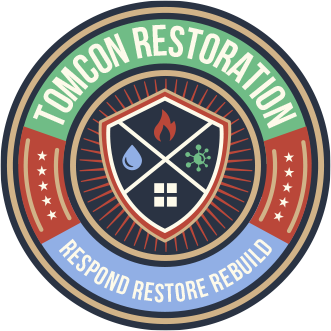Frequently Asked Questions
At TomCon Restoration, LLC, we specialize in demolition and restoring a wide range of damage, including water damage, fire damage, mold remediation, storm damage, and biohazard cleanup. Our team is trained and equipped to handle any type of disaster with precision and expertise.
We understand that emergencies can happen at any time, which is why we offer 24/7 emergency response services. Our team is always on standby and ready to spring into action whenever you need us. We strive to arrive at your property promptly to assess the situation and begin the restoration process as soon as possible.
Yes, all of our technicians undergo rigorous training and certification to ensure that they are equipped with the knowledge and skills necessary to handle any restoration job with professionalism and expertise. We stay up-to-date on the latest industry standards and best practices to deliver the highest quality service to our clients.
The duration of the restoration process depends on the extent and severity of the damage. Our team will assess the situation and provide you with an estimated timeline for completion. We work efficiently and diligently to restore your property as quickly as possible without compromising on quality.
Yes, we have experience working with insurance companies and can assist you throughout the claims process. We will document the damage, provide detailed estimates, and communicate directly with your insurance adjuster to ensure a smooth and hassle-free experience for you.
It depends on the cause and type of water damage:
- Sudden, accidental damage (e.g. burst pipes) is typically covered
- Gradual damage or neglect usually isn’t covered
- Flood damage requires separate flood insurance
- Sewer backups may require additional coverage
Mold can start growing on water-damaged drywall within 24–48 hours under the right conditions (moisture and temperature). Visible mold growth may appear within 1–2 weeks.
Look for these signs:
- Water stains or discoloration on walls/ceilings
- Warping or buckling of floors
- Musty odors
- Visible mold growth
- Increased humidity or condensation
- Dripping sounds or watermarks
Key steps to take:
- Ensure safety (turn off electricity if needed)
- Stop the water source if possible
- Remove standing water and dry the area quickly
- Remove wet items and materials
- Disinfect affected areas, especially for sewage
- Document damage for insurance claims
- Contact professionals for extensive damage or mold
